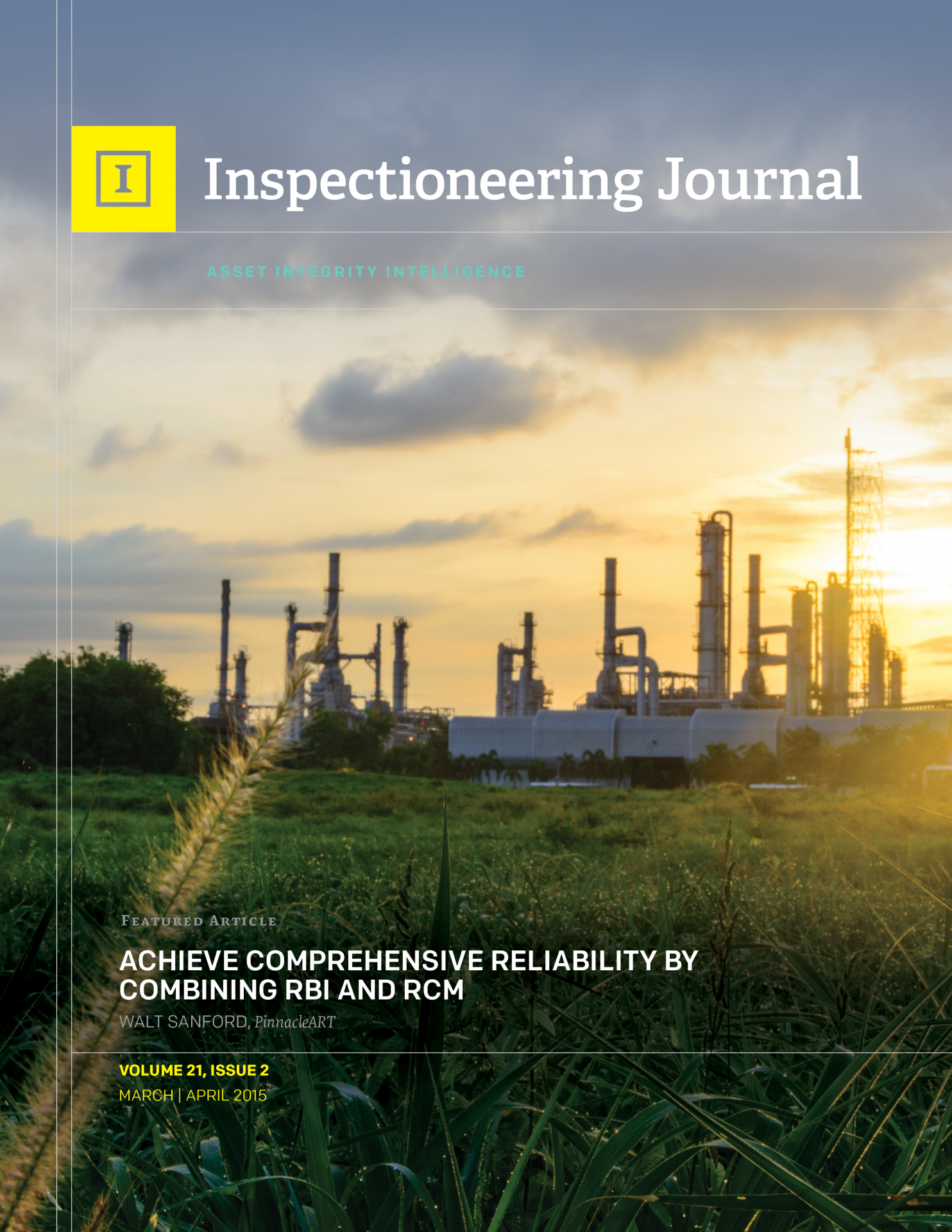Achieving Comprehensive Reliability by Combining RBI and RCM
Inspectioneering Journal, March/April 2015 Issue
On a global scale, managers of refineries, chemical plants, and other industrial facilities constantly seek to develop and implement effective, efficient, and reliable mechanical integrity programs and Risk-Based Inspection (RBI) programs. These programs are crucial to meeting regulatory requirements and ensuring integrity improvement. Today, many managers are finding that they also can address the reliability of all types of assets by combining RBI and Reliability Centered Maintenance (RCM) processes together into one comprehensive reliability management process.
A Common Foundation
Managers of asset-intensive processes and systems are tasked with designing, installing, operating, and maintaining equipment. As such, they often utilize a myriad of tools and technologies to help make decisions on how best to meet the asset owner’s investment requirements while maintaining a safe and regulatory compliant operation. RBI is commonly used to help assure the integrity of operating assets so the assets can reliably and safely meet lifecycle objectives. Other processes include RCM, Process Hazards Analysis (PHA), Reliability, Availability and Maintainability (RAM) analysis, and Root Cause Analysis (RCA).
Fundamentally, all of these processes have risk identification and mitigation at their core. Yet, more often than not, they are conducted as separate efforts, often based on slightly different risk criteria, and often require significant input and support from the same members of the organization. These factors can lead to significant inefficiencies in resource utilization, as well as unclear work priorities, redundant activities, and organizational operations in silos with poor alignment of goals and objectives.
The most efficient and effective organizations are those that recognize the common fundamentals of the various tools and processes, the necessary specialization within their application, and the efficiencies gained from their integration into a common, comprehensive reliability management program. The challenge is to focus on the fundamental aspects of typical risk-management tools and how they can be harmonized within a common risk approach to achieve effective and efficient life-cycle reliability and integrity.

Stay in the know.
Providing data-driven insights, perspectives, and industrial inspiration from the forefront of the reliability transformation.